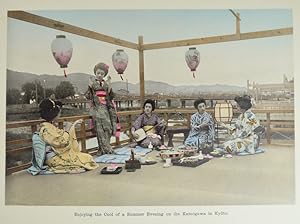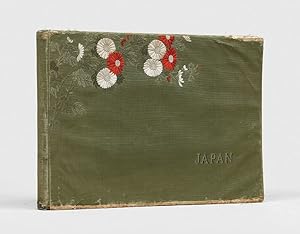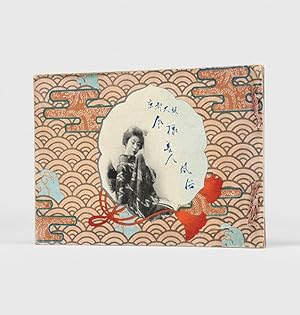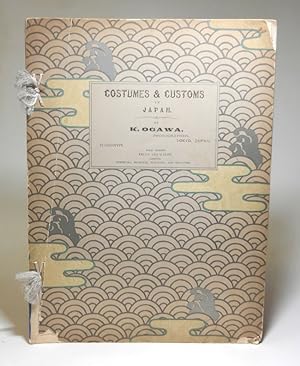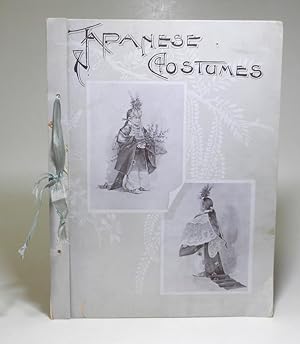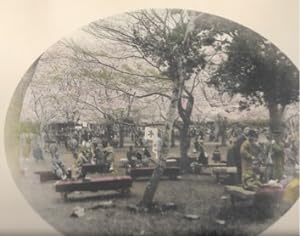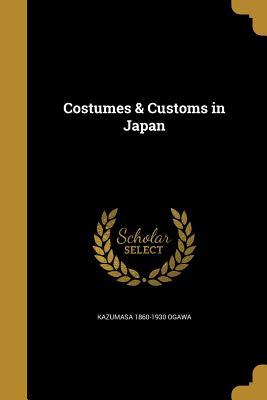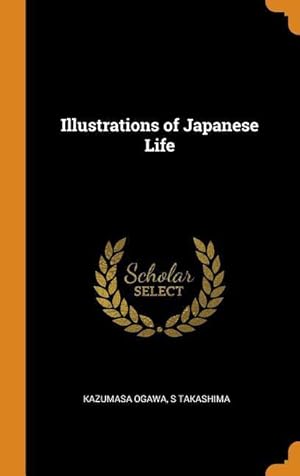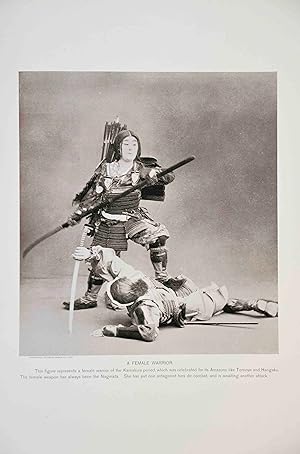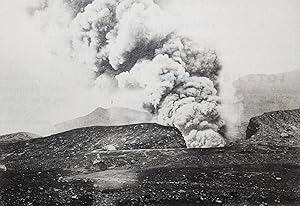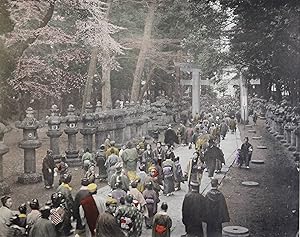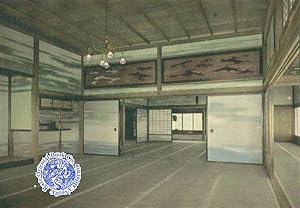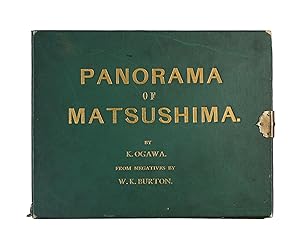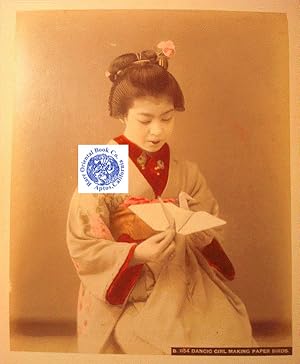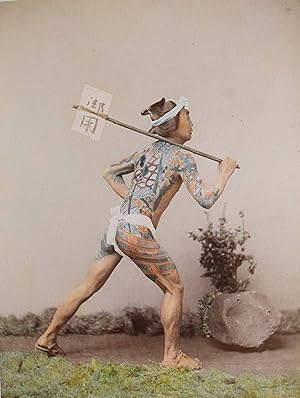ogawa kazumasa (38 Ergebnisse)
Produktart
- Alle Produktarten
- Bücher (38)
- Magazine & Zeitschriften
- Comics
- Noten
- Kunst, Grafik & Poster
- Fotografien
- Karten
-
Manuskripte &
Papierantiquitäten
Zustand
Einband
Weitere Eigenschaften
- Erstausgabe (13)
- Signiert (1)
- Schutzumschlag
- Angebotsfoto (26)
Land des Verkäufers
Verkäuferbewertung
-
Some Japanese Flowers
Verlag: Getty Publications 2013-03-21, Los Angeles, 2013
ISBN 10: 1606061305ISBN 13: 9781606061305
Anbieter: Blackwell's, London, Vereinigtes Königreich
Buch
hardback. Zustand: New. Language: ENG.
-
[Chinese Women: pair of photographic portraits.]
Verlag: [circa1900.], Tokyo., 1900
Anbieter: Asia Bookroom ANZAAB/ILAB, Canberra, ACT, Australien
Two collotype portraits 25.3 x 19.5 cm, and 25.3 x 18.7 cm, both on sheets approx 39.2 x 28.7 cm, edges of the sheets chipped with tears, but the images very good; together with the remains of the original stab sewn back wrapper "Collotype by K. Ogawa. Tokyo Japan" printed at the foot, tissue guard with letterpress "Plate IV." and wrapper with an epigram by Sir Samuel Tuke. Striking pair of photographic portraits of Chinese women in costume by Ogawa Kazumasa (1860-1929) a "pivotal figure in Japanese photography.and arguably the most complete Japanese photographer of the Meiji era." (see Terry Bennett, "Photography in Japan 1853-1912.). He refined and popularised the collotype process, early recognising its commercial potential.
-
Photographs of japanese customs and manners.
Verlag: Kally & Walsh, [1898]., Yokohama, 1898
Anbieter: Salvador Cortés, Librero Anticuario, San Lorenzo del Escorial, Spanien
50 láminas fotográficas coloreadas. Folio. Seda editorial estampada. Cortes dorados. Buen estado.
-
Types of Japan - Celebrated Geysha of Tokyo by K. Ogawa in Phototype & from Photographic Negatives taken by him.
Verlag: Tokyo: K. Ogawa, 1895
Anbieter: Picture This (ABA, ILAB, IVPDA), Sunningdale, Vereinigtes Königreich
Buch Erstausgabe
Soft cover. Zustand: Near Fine. 1st Edition. First edition. Large folio, 280mm x 400mm. Soft card covers, string bound. Twelve collotype plates from photographs by Ogawa, all with tissue guards and the title of each image printed on the tissue. The titles give the name of each Geisha together with her district (nine from Shinbashi, and one each from Yanagibashi, Nihonbashi and Yoshicho). Bound without title page or any text as issued. Internally in Near Fine condition. The covers are rubbed at the edges, the top front corner is chipped and the rear corners are creased. Lower string tie broken but binding remains strong. This is a scarce production by Ogawa. We can find only three copies listed on OCLC (at Library of Congress, Yale and in Basel), and can find none on COPAC.
-
A Model Japanese Villa [INSCRIBED AND SIGNED]
Verlag: Published by the author, Tokyo, 1899
Anbieter: ERIC CHAIM KLINE, BOOKSELLER (ABAA ILAB), Santa Monica, CA, USA
Erstausgabe Signiert
Softcover. Zustand: g+ to vg. First and only edition. Large oblong quarto (14 3/4 x 11 1/2"). [1] leaf (Title), [15] leaves (Plates). Original string-bound stiff wrappers covered with decorative rice paper, with title pasted on front cover. Title inscribed in French and signed by Commander K. Moriyama, naval attaché to the Japanese Embassy in Paris: "A Mademoiselle Malo-Lefèbvre, Avec mes meilleurs souhaits pour joyeux Noël et heureuse année 1909. K. Moriyama." The striking 15 plates containing 19 hand-colored collotype images present various aspects of an upper class Japanese residence (villa). All aspects of the home are covered from the inside formal rooms down to the villa's grounds. Particular emphasis is placed on the gardens and chrysanthemum in beds and in pots.The collotype images vary in size. The single image plates are approximately 10 x 7 1/2~8". Two of the collotypes are oval images approximately the same width as the large rectangular images. The collotypes on the two pages with multiple images are each 4 x 5 1/2". Each plate is protected with a tissue guard captioned in English. The plates run as followes: - Plate #1 contains the following three collotypes: 1) The Main Entrance to the house seen from the court yard; 2) A corner of the house showing a stone water basin; 3) A portion of the garden showing the stone lanterns and bronze storks. - Plate #2: A View of the house seen from the garden. - Plate #3: A View of the garden showing the hillock with three big trees. - Plate #4: A corner of a living room showing a portion of the tokonoma. - Plate #5: A view of the parlor. - Plate #6: A view of the parlor showing the tokonoma. - Plate #7: Chrysanthemums in bed and two young ladies. - Plate #8: Chrysanthemums in pots artistically arranged. - Plate #9: Artificial garden. - Plate #10: Another chrysanthemum bed showing the different varieties. - Plate #11: Another view of the chrysanthemums in pots artistically arranged. - Plate #12: Another view of the chrysanthemum beds with two young ladies in the centre. - Plate #13: A chrysanthemum bed with different varieties. - Plate #14: A view of the chrysanthemum beds in the north end of the garden with two young ladies in the centre. - Plate #15 contains the following three collotypes: 1) A temporary rustic gate at the west end of the garden; 2) The chrysanthemums in pots at the northwest corner of the garden; 3) Another view of the chrysanthemums in pots at the northwest corner of the garden. Minor shelf wear and age-toning to wrappers. Title and captions in English. Bound in colophon in Japanese. Wrappers in overall good+, interior in very good condition. About the author: Ogawa Kazumasa (1860-1929), also known as Ogawa Kazuma or Ogawa Isshin, was a Japanese photographer, printer and publisher who was a pioneer in photomechanical printing and photography in the Meiji era. He was a founding member of the Japan Photographic Society, which gathered photography amateurs from all around Japan. In 1891, he was charged with taking 100 pictures of Tokyo's most attractive geisha, to commemorate the opening of the Ryounkaku.
-
Sights and Scenes in Fair Japan.
Verlag: Imperial Government Railways. (circa1910)., Tokyo, 1910
Anbieter: Asia Bookroom ANZAAB/ILAB, Canberra, ACT, Australien
50 delicate hand coloured collotype plates on high quality stiff card each captioned in English, presented in Japanese embroidered silk covered boards with tassle ties, All edges gilt., patterned gilt endpapers.The hinges of each image have been professionally repaired with Japanese paper and wheat starch paste. Neat pencilled annotations lower corners, leaves clean and bright. 26 x 38cm. This beautiful album proved very popular and was reprinted a number of times, in some editions all of the plates are in colour, as is the case with this copy, and at other times the edition only shows some plates in colour and while the others are in black and white. The work also appears in editions both with and without 2 maps, later editions in Western bindings. Although his name does not appear in this album it seems highly likely that this album was published by Ogawa Kazumasa (1860-1929). Described by Terry Bennett in his excellent work Japanese Photography in Japan 1850 - 1912 as a "Pivotal figure in early Japanese photography. He adapted cutting-edge Western technology in photo-printing processes to produce numerous half-tone and collotype publications which transformed the market." The interesting and delicate scenes in this album include a number showing Japanese people at leisure, in a street scene, a crowd at a sumo match, people involved in their daily occupations and a number of temples, gardens and other places of interest to the early 20th century visitor to Japan. A very good copy of a charming album.
-
Things Seen in Japan.
Verlag: [Tokyo: Ogawa Shashin Seihanjo, c.1896], 1896
Anbieter: Peter Harrington. ABA/ ILAB., London, Vereinigtes Königreich
Erstausgabe
First edition, first printing, of this striking portfolio of Japanese views by Ogawa Kazumasa, one of the leading photographers of the late Meiji period. Scenic vistas of Mount Fuji, Lake Ashi, and Kinkakuji in winter are interspersed with images of temples, a tea ceremony, flower arranging, and the imperial theatre. Ogawa's publications are valued for the sharpness and quality of the images. While in the United States in the early 1880s, Ogawa (1860-1929) studied collotype printing with the New York-based Albertype Company. In 1889, he opened Japan's first photoengraving workshop, the Ogawa Shashin Seihanjo, and branched out into collotype printing in 1894. His printing shop supplied the colour collotype floral frontispieces for Frank Brinkley's famous Japan, Described and Illustrated by the Japanese (1897-8). Ogawa was one of the founding members of the Japan Photographic Society, the first Japanese member of the Royal Photographic Society, and the editor of Japan's only photographic journal of the day. A second edition of Things Seen in Japan was published in the late 1910s, but with 36 collotypes only. Landscape quarto. Original horizontally combed silk, title and flower decoration embroidered on front cover, pictorial endpapers, edges gilt. With 47 hand-coloured collotype plates after photographs by Ogawa Kazumasa, 2 colour maps, text printed in sepia. Spine and extremities worn, contents with occasional light staining and 2 small closed tears repaired with Japanese tissue, bright and well-preserved illustrations pleasingly unaffected. A very good copy.
-
Geisha of Kyoto and Osaka.
Verlag: Tokyo: K. Ogawa, 1903, 1903
Anbieter: Peter Harrington. ABA/ ILAB., London, Vereinigtes Königreich
Attractive souvenir produced by the great Japanese photographer Ogawa Kazumasa (1860-1929), a popular edition of a work originally issued in collotype c.1895. Always a popular topic in Japanese visual arts, the present collection followed Ogawa's famous record of the geisha of Tokyo, perhaps originally published as a celebration of the opening of the Ryounkaku, Tokyo's first skyscraper and a popular amusement centre. In 1884 Ogawa had established the first photographic studio in Tokyo, a little later setting up the first photographic plate manufacturing business, he was one of the founding members of the Japan Photographic Society, the first Japanese member of the Royal Photographic Society, and the editor of Japan's only photographic journal of the day. An excellently preserved copy of this slightly fragile publication, contemporary ownership inscription on the verso of the title page of one Wilhelm Sand who also provides a translation of the title into German. Landscape octavo (210 x 290 mm). Original double-fold patterned pictorial crêpe paper wrappers over card, punched and with silk cord ties at the spine. Housed in recent custom sand cloth drop-back box, brown morocco longitudinal spine label. 33 half-tone plates on coated paper, each with a pair of half-tone portraits of geisha, each with ornate sepia floral frame and captioned in English and Japanese. Wrappers a little rubbed at the edges, title and imprint page lightly browned, else very good indeed.
-
Costumes & Customs in Japan in Collotype. By K. Ogawa, Photographer, Tokyo, Japan. Collotypes: Tea picking at Uji / Old court dress / Costume, in former times of a daughter of the higher class / Hair-dressing / Battle-dore and shuttle-cock play / Koto playing / The art of flower arranging / The ceremony of "Cha-no-yu" / Musical entertainment / A zinrikisha ride to the flower show / Cotton-spinning / Carpenters at work.
Verlag: Yokohama Shanghai Hongkong and Singapore: Kelly & Walsh, 1895
Anbieter: Antiquariat Dr. Lorenz Kristen, Berlin, Deutschland
Erstausgabe
broschiert/ Taschenbuch. 12 black and white collotypes on heavy paper, each protected by a tissue guard. Original brochure with cord binding (the front cover with a crease and small missing parts [see illustration], otherwise a good and clean copy) 40 x 29,5 cm. First edition. 1250 gr.
-
[Tokyo ca.1885].A large hand-tinted photograph 21 x 26.5 cm. stiff card mounted 27 x 35.5 cm., pulled from an album, very excellent image & colorm, clean firm and solid, verso a bit of brown stain dones not go through to front side. R A R E ! . *** **** *** . . A SUPERB IMAGE & EXAMPLE, NO FADING OR ISSUES . . . A STUNNING EARLY MEIJI PERIOD STUDIO POSED PORTRAIT . . . SHOWS A JAPANESE WOMAN & YOUNG GIRL . . . MOST LIKELY PHOTOGRAPHED BY K. OGAWA . * This is a stunning and classic pair of portraits, studio posed with a background of Mt. Fuji. These were commonly hand-tinted in color accent to bring to life the portraits or landscape scenery. . The image shows an adult woman [mother?] with a young girl about seven years old. The girl wears an elaborate silk brocade Haori [jacked] and silk single-color Kimono, She holds a beautifully inner decorated color floral designed umbrella. She wears typical Tabi and Geta shoes. . Her hand is held by a woman who wears a solid color winter warm outer Kimono with plain obi, and head scarf to ward off the cold. . The pair stand before the color-painted studio back-drop showing a typical village thatched-roof country home with a water wheel for the mill. In the background is a snow-capped Mt. Fuji, in one of Japan's most iconic and famous vies. . This image was clearly taken as part of the typical Yokohama souvenir photo albums sold to foreigners available in other ports open for foreign trade. . While undated, these were done circa 1860-1912, the late Edo, early Meiji [1868-1912]periods. . This image was more than likely part of an album as it still shows signs of horse glue remains at the left edge. . *** Color photos are posted to our web site. . *** FOUND IN BENNETT REFERENCE BOOK: This photo is cited in Bennett's book cited below, on page 157, listed in: "Unidentified Number Groups." He does not illustrate this or other similar unidentified photos. . Bennett also cites this exact image in his: "SUPPLEMENTAL LIST OF UNIDENTIFIED NUMBER GROUPS OF 19TH CENTURY JAPANESE PHOTOGRAPHS FROM THE BOOK BY TERRY BENNETT, OLD JAPANESE PHOTOGRAPHS: COLLECTORS' DATA GUIDE, UNPUBLISHED SUPPLEMENT TO THE LIST FOUND PAGES 157-160." . We believe the original negative was correctly numbered by the original photographer, later when this negative was sold or traded, the next photographer added the prefix "B" to match with his group of negatives. . This image is cited in the above resource, this time with: "(Ogawa?)" stated, a bit more of a clue than in his book. Though the above has no page numbers, the numbers are arranged in alphabetic order under "B" @ #1052. The image has the negative number in two places: a. in the lower right corner area of the print: "1052" b. in a black box with white lettering reading::B 1052 LADY AND GIRL." . It must be remembered that most Japanese photographs of this period lack an exact photographer's name. Not only were photographer's name lacking but studios sold, bought and exchanged negatives commonly, the original photographer's name is often lost to posterity. At best assigning a photographer's name is more of an 'art' than a 'science.' . *** Color photos are posted to our website. . *** WHO WAS THE PHOTOGRAPHER OGAWA K. [Kazumasa] [1860-1929]: Like the majority of Japanese early photographs, this one is not signed. It does have indicators of possible provenance by the citation of negative number 1051 scratched in the lower right of the film. Below that at the bottom left bottom is the additional negative number & caption: "B 1052 LADY AND GIRL." It is an educated guess this image was the work of Ogawa. He was also known by his alternate name: Ogawa Isshin. . Per above, Bennett attributes this to possibly being the work of K. Ogawa. Bennett's reasoning is that not only does this image have the 'ear-marks' and studio design similarities with other portraits he took, but the negative number & caption are also key to identifying the 'more than likely' origin of the photographer. . He was a famous Meiji period photographer and tradesman. . He was born in Saitama prefecture, in the Matsudaira Samurai clan. He started studying English and photography at the age of 15 under Yoshiwara Hideo, then in 1880 he moved to Tokyo in order to further hone his English language skills. One year later, Kazumasa was hired as an interpreter in the Yokohama Police Department, while learning photography from the celebrated Shimoka Renjo in Yokohama. . In 1882, he moved to Boston where he took courses in portrait photography and dry plate process. He also studied collotype printing in Albert Type Company. . Upon his return to Japan in 1884, he opened a photographic studio in Tokyo's Iidabashi, in Kojimachi, which was the first studio of this kind in Tokyo. Four years later, he established the Tsukiji Kampan Seizo Kaisha [Tsukiji dry plate manufacturing company], which manufactured dry plates for use by photographers. In 1889, he set up Japan's first collotype business, the Ogawa Shashin Seihan jo, also referred to as the K. Ogawa printing factory. In the same year, Kazumasa worked as an editor for Shashin Shimpo [The Photography Journal], the only photographic journal available at the time which he printed using the collotype printing process. He also printed KOKKA journal by the same method. . Ogawa Kazumasa was a founding member of the Japan Photographic Association [Nihon Shashin Kai], which gathered photography amateurs from all around Japan. In 1891 he was responsible for taking 100 pictures of Tokyo's most attractive geisha, to commemorate the opening of the Ryounkaku. . The contribution by Ogawa to Japanese photography is by and large the most important and fascinating of any Japanese photographer. . His photographs are without equal, including his flower collotypes were used as frontispieces on all volumes of Brinkley's books. Extracted from Bennett below. . *** CONDITION: This work is a photo album single page, mounted on a typical stiff cardboard. T.
-
Japanese Costume before the Restoration. Photographed by K. Ogawa, under direction of Ko-yu-kai (Tokyo Fine Art School). 16 plates
Verlag: Tokyo: K Ogawa, 1893
Anbieter: Antiquariat Dr. Lorenz Kristen, Berlin, Deutschland
Erstausgabe
broschiert/ Taschenbuch. Titlepages, Preface and 16 black and white halftone ("Chemigraph") plates. Original brochure with cord binding (punched holes at three points along the left (spine) edge with ribbon tie, the original cord binding torn in two places and thus loosened, the front cover with a tear and a stain, bumped, otherwise a good and clean copy [see illustration]) 35 x 27 cm. First edition. Copyright by by C. B. Woodward, St Louis, 1893. 1250 gr.
-
Matsushima, (one of the three most famous views of Japan). Tokyo ca 1892.
Verlag: 1892, 1892
Anbieter: Charlotte Du Rietz Rare Books (ILAB), Stockholm, Schweden
Folio. Six b/w collotype photos with printed captions in English. Protected by tissue guards. Original colour decorated wrappers, cotton ties, chipped at corners and spine. Printed title label on upper cover. Embossed marks throughout. Scarce.The photos depict beautiful scenic views from Matsushima, a group of islands in Miyagi Prefecture. Ogawa was the renowned Japanese photographer who published this kind of collotype album to promote Japanese culture among foreigners.
-
The Hanami (Flower-Picnic) described by S. Takashima. Reproduced and Published by K. Ogawa. Yokohama, Hongkong, Shanghai & Singapore, Kelly & Walsh 1897.
Verlag: 1897, 1897
Anbieter: Charlotte Du Rietz Rare Books (ILAB), Stockholm, Schweden
Oblong folio. Pp. (iv), (i) and 25 coloured collotypes, of which 24 made from photographs with captions in English. Including title and introduction in English by Suteta Takashima, and at rear a Japanese colophon. Original decorated silk-covered boards, g.e., gilt endpapers, extremities with light wear and covers slightly dusty. Title label on front cover. Scarce work with lovely colour illustrations of hanami celebrations, a traditional custom of enjoying the transient beauty of sakura (cherry blossom) and less frequently of plum (ume). The pictures are taken from three well-known flower resorts: Ueno Park, Mukojima and Koganei. Kazumasa Ogawa (1860-1929), renowned Japanese photographer opened the first photographic studio in Tokyo in 1882. He published this type of collotype album to promote Japanese culture to westerners at the end of the 19th century.
-
Things Seen in Japan. Tokyo ca 1896.
Verlag: 1896, 1896
Anbieter: Charlotte Du Rietz Rare Books (ILAB), Stockholm, Schweden
Erstausgabe
Oblong 4to. Title page, two coloured maps and 47 coloured collotype plates printed on strong paper. Captions in English and descriptive texts in English, French and Russian printed opposite each picture. Original green silk binding with embroidered floral design on upper cover, lightly rubbed, spine ends frayed. Gilded decorated endpapers. First edition (second edition 1919 with less plates).The coloured plates are made after photographs and depict views from famous places and well-known sights from different parts of Japan. Pictures of traditional ceremonies and festivities are also included. Occasionally a few minor marginal stains but overall a very good copy. Kazumasa Ogawa opened the first photographic studio in Tokyo in 1881. He produced several collotype albums to promote Japanese culture among foreigners. This is a very fine example of Ogawa's expertise as a photographer and printer.
-
COSTUMES & CUSTOMS IN JAPAN
Verlag: WENTWORTH PR, 2016
ISBN 10: 1363010875ISBN 13: 9781363010875
Anbieter: moluna, Greven, Deutschland
Buch
Kartoniert / Broschiert. Zustand: New.
-
Illustrations of Japanese Life
Verlag: FRANKLIN CLASSICS, 2018
ISBN 10: 0341764485ISBN 13: 9780341764489
Anbieter: moluna, Greven, Deutschland
Buch
Gebunden. Zustand: New.
-
The Japan-China War
Verlag: LIGHTNING SOURCE INC, 2021
ISBN 10: 1013945913ISBN 13: 9781013945915
Anbieter: moluna, Greven, Deutschland
Buch
Zustand: New.
-
Illustrations of Japanese Life. Described by S.Takashima.reproduced and published by K. Ogawa F.R.P.S.
Anbieter: Antiquariaat Wim de Goeij, Kalmthout, ANTW, Belgien
Verbandsmitglied: ILAB
6. Tokyo, Ogawa publisher, ca. 1900, album in Japanese style, printed on crêpe paper, bound with silk ties, contains 12 coloured collotype photo reproductions illustrating Japanese life. With English printed captions. Fine copy.
-
Military Costume in Old Japan. Photographed by K. Ogawa, under direction of Chitora Kawasaki and Ko-yu-kai (Tokyo Fine Art School). Tokyo 1893.
Verlag: 1893, 1893
Anbieter: Charlotte Du Rietz Rare Books (ILAB), Stockholm, Schweden
Erstausgabe
Folio. Pp. preface (iv) and fifteen b/w plates (chemigraphs) with descriptive text in English below each photo. Original pictorial wrappers bound in somewhat later half red calf, lightly rubbed. Bookplates. First edition. Deals with military costumes and armour from the Fujiwara epoch to the end of the Ashikaga period. The plates are reproduced photographs taken by Ogawa, Japan's leading photographer at the time, and printed by National Chemigraph Co. in St. Louis, USA. A beautiful and clean copy.
-
A model Japanese villa.
Anbieter: Antiquariaat Wim de Goeij, Kalmthout, ANTW, Belgien
Verbandsmitglied: ILAB
Tokyo, Japan, s.d. ca. 1900-1910 , oblong small folio, 29,5 x 37,5 cm, printed title and 15 leaves of colour printed photogravures, each leaf with a serpent and a caption in English, orig. gold-flecked endpapers, orig. Japanese paper covered boards, tied together with a purple coloured silk ribbon, covers a bit soiled and with an old waterstain in the lower left hand corner, very fine interior. Ogawa (1860 - 1930) was a master of the Japanese collotype. Here he depicts the house and the garden with the famous chrysanthemums collection of Count Okuma at Waseda.
-
HORIYUJI TEMPLE & PAGODA, TATSUTA. No.673.
Anbieter: RARE ORIENTAL BOOK CO., ABAA, ILAB, Aptos, CA, USA
[Japan ca. 1880's]. A lightly pastel hand-colored albumen photograph, ca.26 x 20.5 cm., board mounted, title & number in lower right hand corner, sharp image, clear, small paper tear at right, mended, image not affected, else very clean. EARLY NARA BUDDHIST TEMPLE PHOTOGRAPH: . An excellent frontal view of Horyuji, the Five roofed pagoda at the right, the temple to the left, and other buildings through the covered gate in the center, with supplemental temples beyond. A bronze lantern in the foreground. . Almost done in black & white, but actually very lightly hand-colored, showing the grand scale and magnificence of the Buddhist architecture. The pagoda lists a bit to the left, the result of an earlier earthquake. . A rare look at the structures before the devastating 1923 earthquake when its believed that some of the temples were either burned or destroyed, after which they were rebuilt, but not the same look as the old original, recorded in this historic photograph. Of historical value. See Bennett: below, where he lists this photo, and attributes possible assistance or photographic work by Kashima Seibei [1866-1924] who worked with Ogawa during this productive period. *** WHO WAS THE PHOTOGRAPHER, OGAWA KAZUMASA [1860-1929]: Kazumasa was born in Saitama prefecture, in the Matsudaira Samurai clan. He started studying English and photography at the age of 15 under Yoshiwara Hideo, then in 1880 he moved to Tokyo in order to further hone his English language skills. . One year later, Kazumasa was hired as an interpreter by the Yokohama Police Department, while learning photography from the celebrated photographer, Shimoka Renjo in Yokohama. . In 1882, Kazumasa moved to Boston where he took courses in portrait photography and dry plate process. He also studied collotype printing in the Albert Type Company. . Upon his return to Japan in 1884, Ogawa opened his own photographic studio in Tokyo's Iidabashi, in Kojimachi, which was the first studio of this kind in Tokyo. Four years later, he established the Tsukiji Kampan Seizo Kaisha [Tsukiji dry plate manufacturing company], which manufactured dry plates for use by photographers. . In 1889, he set up Japan's first collotype business, the Ogawa Shashin Seihan jo, also referred to as the K. Ogawa printing factory. In the same year, Kazumasa worked as an editor for Shashin Shimpo [The Photography Journal], the only photographic journal available at the time which he printed using the collotype printing process. He also printed KOKKA an elegant and highly refined journal by the same method. . Ogawa Kazumasa was a founding member of the Japan Photographic Association [Nihon Shashin Kai], which gathered photography amateurs from all around Japan. In 1891 he was responsible for taking 100 pictures of Tokyo's most attractive Geisha, to commemorate the opening of the Ryounkaku. . The contribution by Ogawa to Japanese photography is by and large the most important and fascinating of any Japanese photographer. *** REFERENCES:: BENNETT, Terry.: EARLY JAPANESE IMAGES, this photo is listed, see pp.52 & 154. Bennett attributes possible assistance or photographic work by Kashima Seibei [1866-1924] who worked with Ogawa during this productive period. * BENNETT, Terry. OLD JAPANESE PHOTOGRAPHS: COLLECTORS' DATA GUIDE. * H. Bayou; FELICE BEATO ET L'ECOLE DE YOKOHAMA. JAPANISCHE PHOTOGRAPHIE 1860-1929. * H. Cortazzi: JAPAN CAUGHT IN TIME. * [Feliz Beato/R. von Stillfried]: ONCE UPON A TIME: Visions of Old Japan from the Photos of Beato and Stillfried & the Words of Pierre Loti. * Claudia G. Philipp et al: FELICE BEATO IN JAPAN: Photographien zum Ende der Feudalzeit 1863-1873. * C. Worswick: JAPAN PHOTOPGRAPHS 1854-1905. * Philipp March & Claudia Delank: THE ADVENTURE OF JAPANESE PHOTOGRAPHY 1860-1890. * LA LEGGENDA DI UN IMPERO: Felice Beato e la scuola fotogarfica di Yokohama alla scoperta del Giappone 1860/1900 for more useful details, valuable images and information. * OGAWA Kazumasa: rom Wikipedia, corrected & edited by us: Ogawa Kazumasa [1860-1929], first name known as Kazuma or Isshin, was a Japanese photographer, printer and publisher who pioneered in photomechanical printing and photography in the Meiji era Japan. *** Color scans of this and most items are posted to our website.
-
Japanaj vidajoj kaj moroj (Esperanto, Japanische Ansichten und Bräuche).
Verlag: Tokio, Kjobasi-ku., 1914
Anbieter: Antiquariat Haufe & Lutz, Karlsruhe, BW, Deutschland
Quer-8° (19 x 25,5 cm.). [2] Bl., 50 Tafeln von K(azumasa) Ogawa, [4] Bl. Farbig illustr. OKart. (als Blockbuch gebunden). Zuerst 1910 erschienenes Album für Japan-Besucher mit Aufnahmen des wichtigsten japanischen Fotografen des ausgehenden 19. und beginnenden 20. Jahrhunderts. - Text in japanisch und esperanto. - Der japanische Foto-Pionier Ogawa Kazumasa (auch Ogawa Kazuma oder Ogawa Isshin, 1860-1929) studierte bereits als 15jähriger bei Yoshiwara Hideo Englisch und ging 1880 nach Tokio um seine Englischkenntnisse zu verbessern. In Yokohama wurde er von Shimooka Renjo, einem der ersten professionellen Fotografen, ausgebildet. 1882 ging er nach Boston, wo er Kurse in Portraitfotografie belegte und bei der Albert Type Company den Lichtdruck kennenlernte. Nach seiner Rückkehr nach Japan 1884 eröffnete er in Iidabashi (Kojimachi) ein Fotoatelier, das erste in Tokio. Vier Jahre später gründete er eine Fabrik für Trockenplatten und 1889 Japans erste Druckerei für Lichtdrucke (Ogawa Shashin jo). Ogawa war auch Redakteur bei zwei frühen japanischen Fotozeitschriften, die in seinem Unternehmen im Lichtdruck-Verfahren hergestellt wurden. Außerdem war er Gründungsmitglied der Japan Photographic Society. - "By the end of the 19th century the first photographic publications about Japan by a Japanese photographer were published in Boston and London, though Japan showed little interest in them. Many of the early photographs in these "foreign" publications came from the studio of Ogawa Kazumasa who was also a printer and publisher. He had learned English and the craft of photomechanical printing in Boston. Returning to Japan in 1884, he opened his first studio in Tokyo the next year. At the time, it seems that there were few, if any, Japanese photo publications and most were made for Western consumption. Culturally, Japan was still burdened by its feudal history, which made it suspicious of anything new or Western" (M. Heiting in Heiting/Ryuichi S. 9). - Sehr gutes Exemplar. Sprache: japanisch.
-
Tokyo, K. Ogawa, Meiji 25 (1892), (4),52,(1) pag., 17 coloured collotype plates by K. Ogawa, original cordbound lithographed card wrappers, spine-ends covered in silk (defective), with the original printed title-label on frontwrapper probably renewed in old style printed cloth, folio (39 x 27 cm./ 15 x10.5 in.). = Extremely rare - we could trace only 3 copies in WorldCat (none in the UK). The tale of the Forty-Seven Ronin, also known as the Forty-Seven Samurai, the Ako vendetta, the Ako Wandering Samurai (???? Ako roshi), or the Genroku Ako Incident (?????? Genroku ako jiken), is a prototypical Japanese story. Described by one noted Japan scholar as the country's "national legend" (Izumo), it recounts the most famous case involving the samurai code of honor, Bushido. The book recreates a very famous incident in 1701 in which Asano Naganori (Lord Asano) was required to commit harakiri. His forty-seven samurai bodyguards, then reduced to the status of ronin, or masterless samurai, took revenge two years later by assassinating Lord Kira Yoshinaka, the individual responsible for Naganori's death. The ronin were then required by the Shogun to commit harakiri and buried with their master. The 17 collotype plates depict key events and settings in the story. Images involving actual characters are reenacted for the photographs. During the period from 1892 through 1896 Kazumasa Ogawa produced a series of photographic books with collotype plates which have several common characteristics. Individually, each of the books represent the work of a master photographer executing the results of his labor through a then state of the art high quality printing process. Considered as a series, these books form an amazing pictorial mosaic of Japanese life, customs, cultural treasures and scenic places, recorded as Japan emerged from relative isolation to the outside world and entered into the 20th century. (Source: G.C. Baxley). Wrappers worn/ defective at spine-ends.
-
The Hanami (Flower-Picnic). (Published by Kazumasa Ogawa).
Verlag: Yokohama, Hongkong, Shanghai, Singapore, Kelly and Walsh., 1897
Anbieter: Antiquariat Haufe & Lutz, Karlsruhe, BW, Deutschland
Quer-Folio (29 x 38 cm.). [2] Bl., 25 farb. Lichtdruck-Tafen (Collotypes), davon 24 nach Photographien von K. Ogawa. OPbd. mit floralem Krepppapierbezug u. Deckelschild, als Blockbuch gebunden. Einzige Ausgabe. - Seltenes aufwendig ausgestattetes Album mit sparsam kolorierten Aufnahmen, welche bei den tradionellen Kirschblüten-Festen (Hanami) in Ueno Park, Mukojima und Koganei entstanden. - "By the end of the 19th century the first photographic publications about Japan by a Japanese photographer were published in Boston and London, though Japan showed little interest in them. Many of the early photographs in these "foreign" publications came from the studio of Ogawa Kazumasa who was also a printer and publisher. He had learned English and the craft of photomechanical printing in Boston. Returning to Japan in 1884, he opened his first studio in Tokyo the next year. At the time, it seems that there were few, if any, Japanese photo publications and most were made for Western consumption. Culturally, Japan was still burdened by its feudal history, which made it suspicious of anything new or Western" (M. Heiting in Heiting/Ryuichi S. 9). - Rücken am Fuß mit kl. Fehlstelle am Bezugspapier, gutes sauberes Exemplar. Sprache: englisch.
-
THE HAKONE DISTRICT. With Descriptive Text by James Murdoch.
Anbieter: RARE ORIENTAL BOOK CO., ABAA, ILAB, Aptos, CA, USA
[Tokyo n.d.ca 1892, Ogawa]. Stiff decorated wrs., very clean tall folio 30 x 40.5 cm., 29 fine collotype photos: 17 large full page 22 x 28 cm., & 12 smaller 4 to a page 11 x 14 cm., with English text by J.Murdoch, color map, silk thread ties. . *** **** *** . . A SUPERB AND VERY EARLY LARGE-SIZE PHOTOGRAPHIC STUDY . . * A complete, solid and very nice copy. . A superb and obscure work by Japan's leading photographer of the time. This work illustrates Japan's scenic beauty in and around the Hakone district, with nice images of the road to Miyanoshita & Kiga, Tono-sawa, gigantic cryptomeria trees at Ohirodani, the tea-house at Sengen-yama, Fujiiya Hotel, Sengen Yama, Haya-kawa &c. Winter scene form the torrent at Do Gashima, below the Naraya Hotel, Sokokura, Kiga, Hakone village, Yumoto, Ashnoyu. Around the base of Kamurigatake, NiNi-no-taira, Ojigoku, Owakidani and the sulfur springs. . * On March 11, 1691, Engelbert Kaempfer and his companions passed through Hakone or as he wrote it "Fakone," on their way from Nagasaki to the Shogun's Court at Yedo. With lovely photographic images of Mt. Fuji. A very special early resource. . Note: If you are interested in Kaempfer books please contact us as we have them in stock. . * Extracted from Wikipedia, corrected & edited by us: Ogawa Kazumasa [1860-1929], first name known as Kazuma or Isshin, was a Japanese photographer, printer and publisher who pioneered in photomechanical printing and photography in the Meiji era Japan. . *** WHO WAS THE PHOTOGRAPHER OGAWA K. [Kazumasa] [1860-1929]: . OGAWA was born in Saitama prefecture, in the Matsudaira Samurai clan. He started studying English and photography at the age of 15 under Yoshiwara Hideo, then in 1880 he moved to Tokyo in order to further hone his English language skills. One year later, Kazumasa was hired as an interpreter in the Yokohama Police Department, while learning photography from the celebrated Shimoka Renjo in Yokohama. . In 1882, he moved to Boston where he took courses in portrait photography and dry plate process. He also studied collotype printing in Albert Type Company. . Upon his return to Japan in 1884, he opened a photographic studio in Tokyo's Iidabashi, in Kojimachi, which was the first studio of this kind in Tokyo. Four years later, he established the Tsukiji Kampan Seizo Kaisha [Tsukiji dry plate manufacturing company], which manufactured dry plates for use by photographers. In 1889, he set up Japan's first collotype business, the Ogawa Shashin Seihan jo, also referred to as the K. Ogawa printing factory. In the same year, Kazumasa worked as an editor for Shashin Shimpo [The Photography Journal], the only photographic journal available at the time which he printed using the collotype printing process. He also printed KOKKA journal by the same method. . Ogawa Kazumasa was a founding member of the Japan Photographic Association [Nihon Shashin Kai], which gathered photography amateurs from all around Japan. In 1891 he was responsible for taking 100 pictures of Tokyo's most attractive geisha, to commemorate the opening of the Ryounkaku. . The contribution by Ogawa to Japanese photography is by and large the most important and fascinating of any Japanese photographer. . *** Color photos are posted to our website. . *** REFERENCES: . The following are some useful bibliographies to consult for more information on this album and Japanese early photography in general: * BENNETT, Terry. EARLY JAPANESE IMAGES . BENNETT, Terry. OLD JAPANESE PHOTOGRAPHS: COLLECTORS' DATA GUIDE. * H. Bayou; FELICE BEATO ET L'ECOLE DE YOKOHAMA. JAPANISCHE PHOTOGRAPHIE 1860-1929. * H. Cortazzi: JAPAN CAUGHT IN TIME. * [Feliz Beato/R. von Stillfried]: ONCE UPON A TIME: Visions of Old Japan from the Photos of Beato and Stillfried & the Words of Pierre Loti. * Claudia G. Philipp et al: FELICE BEATO IN JAPAN: Photographien zum Ende der Feudalzeit 1863-1873. * C. Worswick: JAPAN PHOTOGRAPHS 1854-1905. * Philipp March & Claudia Delank: THE ADVENTURE OF JAPANESE PHOTOGRAPHY 1860-1890. * LA LEGGENDA DI UN IMPERO: Felice Beato e la scuola fotogarfica di Yokohama alla scoperta del Giappone 1860/1900 for more useful details, valuable images and information. . ***.
-
Tokyo [1899], Ogawa]. Crepe paper covered boards,very clean, paper label, purple silk thread ties, oblong format 37.5 x 26.5 cm., covers bit dusty, 19 collotype hand-colored photos a lovely work, solid copy. FIRST & ONLY EDITION This grand work was hand colored, and depicts the Japanese villa from the outside, but mostly from the interior. especially the internal gardens. Also showing the lavish flower and manicured gardens, rock gardens, miniature lake, rivers chrysanthemums and other prize flowers. The interior views of the villa show elaborate screens, art objects, architecture of the room and buildings, grand halls, guest rooms, the Tokunoma, and several other views of the great house and its entrance, with horse drawn carriage. Many Jinrikisha men sit besides their vehicles as their masters are being entertained. Delicately hand colored with great skill, expert composition for each photograph. An excellent example of 19th century architecture, garden and photography. * WHO WAS OGAWA KAZUMASA: . Extracted from Wikipedia, corrected & edited by us: Ogawa Kazumasa [1860-1929, first name known as Kazuma or Isshin, was a Japanese photographer, printer and publisher who pioneered in photomechanical printing and photography in the Meiji era Japan. Isshin is also a first name used by Ogawa. * Kazumasa was born in Saitama prefecture, in the Matsudaira Samurai clan. He started studying English and photography at the age of 15 under Yoshiwara Hideo, then in 1880 he moved to Tokyo in order to further hone his English language skills. One year later, Kazumasa was hired as an interpreter in the Yokohama Police Department, while learning photography from the celebrated Shimoka Renjo in Yokohama. * In 1882, he moved to Boston where he took courses in portrait photography and dry plate process. He also studied collotype printing in Albert Type Company. * Upon his return to Japan in 1884, he opened a photographic studio in Tokyo's Iidabashi, in Kojimachi, which was the first studio of this kind in Tokyo. Four years later, he established the Tsukiji Kampan Seizo Kaisha [Tsukiji dry plate manufacturing company], which manufactured dry plates for use by photographers. In 1889, he set up Japan's first collotype business, the Ogawa Shashin Seihan Jo, also referred to as the K. Ogawa printing factory. In the same year, Kazumasa worked as an editor for Shashin Shimpo [The Photography Journal], the only photographic journal available at the time which he printed using the collotype printing process. He also printed KOKKA journal by the same method. * Ogawa Kazumasa was a founding member of the Japan Photographic Association [Nihon Shashin Kai], which gathered photography amateurs from all around Japan. In 1891 he was responsible for taking 100 pictures of Tokyo's most attractive geisha, to commemorate the opening of the Ryounkaku. * The contribution by Ogawa to Japanese photography is by and large the most important and fascinating of any Japanese. *** NOTE ON REFERENCE BOOKS: If you are interested in reference books on Ogawa or early Japanese photography, please contact for our current list. * JAPANESE CREPE PAPER BOOKS: If you would like to see more of our listings of Japanese crepe paper books please let us know, we have many in stock. *** REFERENCE: SHARF, Frederic A.:TAKEJIRO HASEGAWA: Japanese Pictures of Japanese Life. * The following are some useful bibliographies to consult for more information on this album and Japanese early photography in general: * WIKIPEDIA; rry. EARLY JAPANESE IMAGES . BENNETT, Terry. OLD JAPANESE PHOTOGRAPHS: COLLECTORS' DATA GUIDE. . H. Bayou; FELICE BEATO ET L'ECOLE DE YOKOHAMA. JAPANISCHE PHOTOGRAPHIE 1860-1929. . H. Cortazzi: JAPAN CAUGHT IN TIME. . [Feliz Beato/R. von Stillfried]: ONCE UPON A TIME: Visions of Old Japan from the Photos of Beato and Stillfried & the Words of Pierre Loti. . Claudia G. Philipp et al: FELICE BEATO IN JAPAN: Photographien zum Ende der Feudalzeit 1863-1873. . C. Worswick: JAPAN PHOTOPGRAPHS 1854-1905. . Philipp March & Claudia Delank: THE ADVENTURE OF JAPANESE PHOTOGRAPHY 1860-1890. . LA LEGGENDA DI UN IMPERO: Felice Beato e la scuola fotogarfica di Yokohama alla scoperta del Giappone 1860/1900 for more useful details, valuable images and information. * ans can be sent by email, or are posted to our website.
-
Panorama of Matsushima
Verlag: 1895]., 1895
Anbieter: Maggs Bros. Ltd ABA, ILAB, PBFA, BA, London, Vereinigtes Königreich
First and only edition. A 5-part fold-out panorama of hand-coloured albumen prints with letterpress description pasted on inner back board. Two plates stamped ?Japan Society? (one stamp smudged). Oblong folio. Original cloth with silvered lock, overall a good copy. Tokyo, K. Ogawa, n.d. [but ca. ?The Archipelago of pine-clad islands bearing the name of Matsu-shima, has been famed for its beauty since Northern Japan was conquered from the Ainu aborigines in the 8th century, and is one of the San-kei or 'Three most Beautiful Scenes' of Japan. There are said to be 88 islands between Shiogama and Matsushima, and 808 in all, between Shiogama and Kinkwa-zan, of which but very few are inhabited, but 8 and its compounds are favourite round numbers with the Japanese, and moreover, the smallest rocks are included in the enumeration. Each of them, down to the least, has received a name, many of them fantastic, as 'Buddha's Entry into Nirvana,' 'Question and Answer Island' , 'the Twelve Imperial Consorts' and so on.? (text on back board). This rare panorama was taken by the Scottish engineer and photographer William K. Burton (1856-1899) who lived in Japan for over ten years teaching sanitary engineering at Tokyo Imperial University. The panorama was printed and hand-coloured at the Ogawa studio and presumably it was privately printed in a very small number to be given to friends. Exceedingly rare. No copy in OCLC.
-
JAPANESE HAND-COLORED EARLY ALBUMEN PHOTOGRAPH ALBUM.
Anbieter: RARE ORIENTAL BOOK CO., ABAA, ILAB, Aptos, CA, USA
[Japan 1870's-1880's, Kashima/Ogawa]. Wood covers, very good 25 hand-colored albumen, each image: ca. 26 x 21, laid down on stiff accordion album leaves, edges gilt, some hinges weak or mended, all images strong, clear, not faded. RARE ! *** *** *** . . . ORIGINAL HAND-COLORD PERIOD PHOTOGRAPH ALBUM . . . *** This is a lovely collection of finely hand-colored albumen images. The images are from western, and southern Japan, from Nikko down to Osaka, and Nagasaki. Albums of these places are not common in the Japanese photographica genre. Thou many are not signed nor identified by their negative numbers, this is clearly the work of some of Japan's excellent and celebrated photographers. . It is entirely possible, this is one of a group of photograph albums covering Japan, this being a second volume, the first probably covered Yokohama and the Tokyo area. . The album begins where the first volume most likely left off. Regardless this is an excellent example of early Japanese photography. . *** The photographers are questionable, however saying this, we have identified some in Bennett [see below] by their negative numbers. Namely #746 attributed to Kashima or Ogawa Kazumasa. Number 454a attributed to Kusakabe; #54 attributed to Ogawa Kazumasa ad Ogawa Sashichi. . * THE NEGAVTIVE NUMBERS: A good portion of these images have negative numbers, most of which are not listed in Bennett. It is a well known fact, that a good number of Japanese negatives were sold, loaned borrowed and exchanged between both foreign and Japanese photographers and photograph studios from the 1860's onwards. Therefore the exact photographer who took the photograph is commonly in question. Though there has been a lot of research and efforts to identify negative numbers, each photographer and photographic studio enhanced, changed or altered the original negative at will to create a system that would match his own needs. This left complete chaos in the field for those of use who would like to truly identify the actual person responsible for taking the photograph. . * This album contains a good number of unidentified photographs, but skillfully taken and composed with a keen eye, we identify: . FROM THE FRONT: 1. Unknown view of a large river with a bridge and lumberyard in the foreground. There is no negative number, it was likely taken near Yokohama or Tokyo along a large river with low hills in the background. Several small boats ply the river. The bridge seems to be built of steel, indicating a Meiji period work. . * 2. [Osaka] Castle and large moat, unidentified, with low mountains in the background. Nicely done with a keen eye. This is confirmed to be Osaka castle, a very similar view is found and is illustrated Zannier [see below] on p.61 as "Moats Osaka" by Felice Beato. . * 3. Typical street scene, a single electric pole in the immediate foreground, with 2-3 other poles in the deep foreground, a few wires go to businesses. A large number of people, rickshaw pullers are in the street, a large majority of people face the photographer who must have been on a very tall ladder, causing a commotion, nevertheless the image is very clear and no loss of focus during exposure. This must be dated around the late 1870's-1880's with the advent of electricity. A small fleck of the photo surface lacking, else clean, a touch of over done red as common in the early Meiji period. . * 4. Numbered in the negative: A382 Tennoji Pagoda, Osaka. This shows a nice two-sided perspective of the pagoda and the background temple building. . * 5. Numbered A 420 Kasuga at Nara. Shows a lovely pathway with four deer, many stone lantern on both sides of the road, thick forest trees. This exact image is found in March, see below, on p.112. . * 6.Numbered A 415 Nigetsudo at Nara. Shows the stone steps up to the shrine, with is stunning architecture. A few people freeze during the photographing. Beautifully composed. . * 7.Numbered 75 Nara Park. This shows a pavilion with three people looking over the lake and red Momiji tree and pine tree. . * 8. Numbered G4 Nagasaki Harbour. This is a stunning view from the hill overlooking the city and harbor. There is a very tall red-brick chimney at the far right, with a smaller one just below that as well, likely a brick or other factory. A large number of vessels including a few which look like foreign ships anchored in the bay. . * 9. Numbered 746 View of Miyajima. This is listed in Bennett by this number, he states the photographers as either Ogawa Kazumasa, or Ogawa Sashichi, with question marks. This image shows the great Torii gate in the water, and the large stone beacon lantern with a young boy petting a deer. This is a famous shrine island just below Hiroshima. . * 10. Numbered B74 Matsushima, Inland Sea [Three view in Japan] Part 1. This sows a large pie tree overlooking the Inland sea, two small islands and three small boats in the lower right, a picturesque scene. . * 11. Numbered A 455 Red Lacquer [Sacred Bridge] Nikko. This is of course a well-known and "classic" image showing the red lacquered bridge. There are a few electric poles in the background making this around 1875-1880's. A similar image is found in March, p.91, see below. . * 12. Numbered 16 Yomeimon Gate, at Nikko. The elaborately colored entrance gate to the grave temples of Japan's Shoguns. . * 13. Numbered 53 Inside Iyemitsu Temple, Nikko. Found in Bennett as number 54. Shows the elaborately designed interior view of the temple and its shrine. . * 14. Numbered I 83 Ganman, Nikko. Probably the work of Ogawa Kazumasa. Shows the rushing river, with a large number of stone Buddha s on the left bank, a single person sits on a huge rock observing the photographer. A similar image is illustrated in March, see below, as found on p.113. . * FROM THE BACK: 15. Numbered P67 Chinese Music. This shows seven musicians each wearing usual hats and playing musical instruments. They stand before a two-story house and bamboo fence. This looks to be in.
-
A Model Japanese Villa. Tokyo, Ogawa Kazumasa, 1899.
Verlag: 1899, 1899
Anbieter: Charlotte Du Rietz Rare Books (ILAB), Stockholm, Schweden
Erstausgabe
Oblong folio. (39.2 x 29 cm). Title in English, colophon in Japanese and 15 plates with 19 hand-coloured collotype photos. All protected by tissue guards with English printed captions. Original decorated crêpe paper binding, cotton ties, some minor dust-staining. (Small paper loss to title label on front cover). First edition. Beautiful photos of an elegant Japanese country villa which used to belong to Okuma Shigenobu, Prime Minister of Japan (1898 and 1914-6) and the founder of Waseda University. Includes images of the exterior, the inside formal rooms and of the lovely landscaped garden. Okuma Shigenobu loved growing flowers which explains the many photos of chrysanthemums in beds and pots.Kazumasa Ogawa, renowned Japanese photographer opened the first photographic studio in Tokyo in 1882. He published this type of collotype album to promote Japanese culture to westerners at the end of the 19th century. This is a very fine example of Ogawa's expertise as a photographer and printer.
-
Japan, described and illustrated by the Japanese. Written by eminent Japanese authorities and scholars.
Verlag: Boston, Mass, J. B. Millet (1897-1898)., 1898
Anbieter: Antiquariat Haufe & Lutz, Karlsruhe, BW, Deutschland
Erstausgabe
10 Bände. Folio (41 x 32 cm.). Mit 15 farb. Tafeln (Orchideen und andere Blumen, Collotypes), 30 handkol. Orig.-Photographien (Albuminabzüge, jeweils ca. 25 x 19 cm.), 220 Abb. im Text u. 15 farblithogr. Ornament-Tafeln auf Tonpapier. OHln. mit goldgepr. illustr. Deckelsch. (als Blockbuch gebunden). Heiting/Ryuichi S. 10 f. (Emperer's edition). - "Tokyo edition. Limited to five hundred copies, of which this is copy No. 211". - Die früheste und umfangreichste Buchreihe über Japan mit Orig.-Photographien. - Insgesamt erschienen 7 teils num. Ausgaben. - Die meisten Aufnahmen stammen von dem japanischen Fotopionier Ogawa Kazumasa (auch Ogawa Kazuma oder Ogawa Isshin, 1860-1929), darunter auch die schönen Farbtafeln verschiedener Blumen (die heute noch als Kunstdrucke angeboten werden, vorliegende num. Ausgabe mit 5 zusätzlichen Tafeln), die berühmte Aufnahme des Fuji ("Mount Fuji as seen from Kashiwabara"), japanische Ringer, Frauen bei einer Tee-Zeremonie, "Tatooed Postman" u. a. - Ogawa studierte bereits als 15jähriger bei Yoshiwara Hideo Englisch und ging 1880 nach Tokio um seine Englischkenntnisse zu verbessern. In Yokohama wurde er von Shimooka Renjo, einem der ersten professionellen Fotografen, ausgebildet. 1882 ging er nach Boston, wo er Kurse in Portraitfotografie belegte und bei der Albert Type Company den Lichtdruck kennenlernte. Nach seiner Rückkehr nach Japan 1884 eröffnete er in Iidabashi (Kojimachi) ein Fotoatelier, das erste in Tokio. Vier Jahre später gründete er eine Fabrik für Trockenplatten und 1889 Japans erste Druckerei für Lichtdrucke (Ogawa Shashin jo). Ogawa war auch Redakteur bei zwei frühen japanischen Fotozeitschriften, die in seinem Unternehmen im Lichtdruck-Verfahren hergestellt wurden. Außerdem war er Gründungsmitglied der Japan Photographic Society. - "By the end of the 19th century the first photographic publications about Japan by a Japanese photographer were published in Boston and London, though Japan showed little interest in them. Many of the early photographs in these "foreign" publications came from the studio of Ogawa Kazumasa who was also a printer and publisher. He had learned English and the craft of photomechanical printing in Boston. Returning to Japan in 1884, he opened his first studio in Tokyo the next year. At the time, it seems that there were few, if any, Japanese photo publications and most were made for Western consumption. Culturally, Japan was still burdened by its feudal history, which made it suspicious of anything new or Western" (M. Heiting). - 3 Bände mit Abriebstellen am Bezugspapier, Ecken etwas bestoßen, sonst sehr gut erhalten. Sprache: englisch.


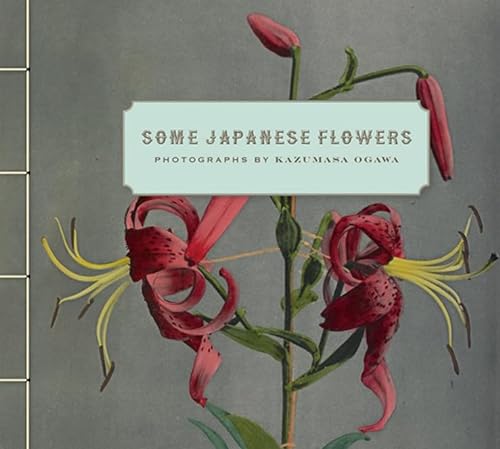
![Bild des Verkäufers für [Chinese Women: pair of photographic portraits.] zum Verkauf von Asia Bookroom ANZAAB/ILAB](https://pictures.abebooks.com/inventory/md/md31049080174.jpg)

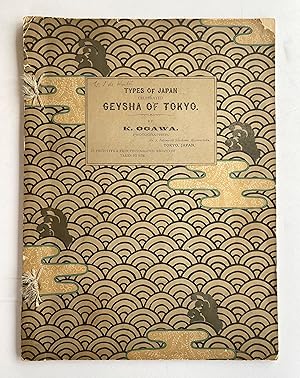
![Bild des Verkäufers für A Model Japanese Villa [INSCRIBED AND SIGNED] zum Verkauf von ERIC CHAIM KLINE, BOOKSELLER (ABAA ILAB)](https://pictures.abebooks.com/inventory/md/md15460127141.jpg)
